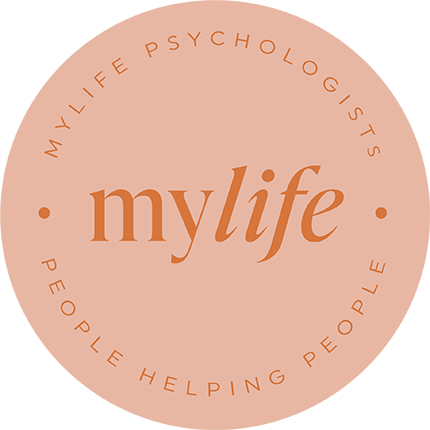Imagine a colleague who always meets deadlines, a parent who never misses a school event, or a friend who seems to have it all together. Now imagine that beneath this façade, they are battling a persistent sense of emptiness, fatigue, and hopelessness. This is the reality for many people living with high-functioning depression – a condition that can be as debilitating as it is invisible.
In this blog post, we’ll shine a light on high-functioning depression: what it is, how it differs from other forms of depression, its signs and symptoms, and, most importantly, how evidence-based psychological treatments can help. If you or someone you know is quietly struggling, know that support is available and recovery is possible.
What Is High-Functioning Depression?
High-functioning depression is not an official diagnosis in the DSM-5 (the standard classification of mental disorders used by mental health professionals), but it’s a term increasingly used to describe people who experience chronic depressive symptoms while maintaining daily responsibilities. Clinically, it often aligns with persistent depressive disorder (PDD), previously known as dysthymia.
People with high-functioning depression may:
- Hold steady jobs
- Maintain relationships
- Meet family or social obligations
- Appear outwardly “fine” to friends, colleagues, and even loved ones
Yet, beneath the surface, they may feel as if they’re “hanging on by a thread”. The effort required to keep up appearances can be immense, leading to exhaustion and a sense of isolation.
Prevalence in Australia
Mental health is a significant concern in Australia. According to the Australian Bureau of Statistics’ National Study of Mental Health and Wellbeing (2020-2022), 42.9% of Australians aged 16 – 85 have experienced a mental disorder at some point in their lives. In the past 12 months, 21.5% reported experiencing a mental disorder, with anxiety disorders being the most common at 17.2%.
While specific statistics on high-functioning depression are limited due to its under-recognition, the prevalence of depressive disorders remains substantial. The Australian Institute of Health and Welfare notes that depression is among the most common mental illnesses in the country.
Symptoms: What Does High-Functioning Depression Look Like?
Unlike major depressive disorder (MDD), where symptoms can be severe and disruptive, high-functioning depression tends to be more chronic and subtle. However, the impact on quality of life can be just as significant.
Common symptoms include:
- Persistent low mood or sadness (lasting at least two years for PDD)
- Fatigue or low energy, even after adequate rest
- Difficulty concentrating or making decisions
- Changes in appetite or weight (increase or decrease)
- Sleep disturbances (insomnia or sleeping too much)
- Feelings of hopelessness or pessimism
- Loss of interest or pleasure in activities once enjoyed
- Social withdrawal or reduced engagement in relationships
- Physical symptoms (e.g., headaches, stomach aches)
Many people with high-functioning depression become experts at masking their symptoms. They may push through their responsibilities, but the internal struggle can lead to burnout, reduced self-esteem, and a diminished sense of purpose.
Why Is High-Functioning Depression Hard to Spot?
One of the most challenging aspects of high-functioning depression is its invisibility. Because individuals continue to “function”- often at a high level – friends, family, and even healthcare providers may overlook the signs.
- Stigma and Shame: People may feel ashamed or guilty for struggling when they appear to be “doing well,” making them less likely to seek help.
- Misattribution: Symptoms like fatigue or irritability may be attributed to stress, personality, or lifestyle rather than depression.
- Chronicity: Because symptoms are persistent but milder, they can become the “new normal,” making it harder to recognise that something is wrong.
Causes and Risk Factors
Like other forms of depression, high-functioning depression can have multiple causes:
- Genetic predisposition: Family history of depression increases risk.
- Biological factors: Hormonal imbalances or neurotransmitter changes.
- Life stressors: Chronic stress, trauma, or significant life changes.
- Personality traits: Perfectionism, high self-expectations, or a tendency to internalise problems.
It’s important to remember that depression is not a sign of weakness or a character flaw. It is a medical condition that can affect anyone, regardless of their achievements or circumstances.
The Toll of High-Functioning Depression
While people with high-functioning depression may keep up with life’s demands, the emotional and physical cost can be enormous. Everyday tasks may require far more effort, leaving individuals drained and vulnerable to worsening symptoms over time.
“If it takes a person without depression 5% of their energy to do their laundry, it may cause a person with depression 10 times that. A person with high-functioning depression will probably get the laundry done. But the expense is huge.” (Dr. Potter, Cleveland Clinic).
Left untreated, high-functioning depression can increase the risk of developing major depressive episodes, anxiety disorders, substance use issues, and physical health problems.
Evidence-Based Treatments
The good news is that high-functioning depression and persistent depressive disorder (PDD) are treatable. They respond well to evidence-based treatments that combine psychological therapies, medication, and lifestyle adjustments Psychological therapies are typically the first line of treatment, particularly for mild to moderate cases. Below is a breakdown of the most effective approaches supported by research and clinical guidelines:
Cognitive Behavioural Therapy (CBT)
CBT is one of the most researched and effective treatments for depression, including high-functioning depression. It helps people:
- Identify and challenge unhelpful thought patterns
- Develop healthier ways of thinking and behaving
- Build coping skills to manage symptoms and prevent relapse
CBT is usually structured, time-limited, and goal-oriented, making it ideal for people who want practical strategies to improve their mood and functioning.
Behavioural Activation
Behavioural activation focuses on increasing engagement in meaningful and enjoyable activities, which can help break the cycle of withdrawal and low mood. By scheduling and gradually increasing positive activities, individuals can experience small wins that boost motivation and mood.
Lifestyle Interventions
Recent research highlights the role of lifestyle factors in managing depression. A study from Deakin University’s Food and Mood Centre found that nutritional counselling and physical activity were as effective as traditional psychotherapy in treating mild to moderate depression. Participants who received lifestyle therapy experienced a 42% reduction in depressive symptoms, comparable to the 37% reduction seen in the CBT group. These findings suggest that incorporating diet and exercise into treatment plans can be beneficial, especially when guided by professionals.
Mindfulness-Based Cognitive Therapy (MBCT)
MBCT combines elements of CBT with mindfulness meditation. It teaches people to observe their thoughts and feelings without judgment, reducing rumination and the risk of relapse. MBCT is particularly effective for individuals with recurrent depression.
Psychodynamic Therapy
Psychodynamic therapy explores how past experiences, particularly early relationships, influence current patterns of thinking, feeling, and behaving. This deeper understanding can help individuals develop greater self-awareness and resilience.
Medication: When Therapy Alone Isn’t Enough
For moderate to severe symptoms, antidepressants are often recommended alongside therapy. Commonly prescribed options include Selective Serotonin Reuptake Inhibitors (SSRIs), due to their tolerability and safety profile. They increase serotonin levels, improving mood and reducing anxiety. Serotonin-Norepinephrine Reuptake Inhibitors (SNRIs) target both serotonin and norepinephrine, making them potentially effective for depression with fatigue or chronic pain. You should always consult a GP or psychiatrist for advice on medication, and if you are prescribed medication, then regular monitoring by a medical doctor is essential.
Practical Tips for Managing High-Functioning Depression
While professional support is essential, there are steps you can take to support your mental health:
Start small and personalise:
It’s not necessary to overhaul your entire lifestyle at once. Choose small, manageable changes that fit your interests and circumstances. Over time, improvements in one area (such as sleep) can positively influence others (like energy for exercise).
Stay connected:
Reach out to trusted friends or family, even if it feels difficult. Maintaining relationships with friends, family, or support groups can reduce feelings of isolation and provide emotional support.
Prioritise self-care and enjoyable activities:
Make time for relaxation, hobbies, and activities that foster a sense of accomplishment or joy. Scheduling enjoyable or meaningful activities – even when motivation is low – can help break the cycle of withdrawal and anhedonia (loss of pleasure).
Exercise regularly:
Engaging in consistent physical activity – such as walking, jogging, swimming, or yoga – has been shown to reduce depressive symptoms and improve mood. Exercise releases endorphins, reduces stress, and can increase energy levels, making it a powerful adjunct to therapy.
Aim for a consistent sleep schedule:
Aim to go to bed and wake up at the same time each day, even on weekends. Good sleep hygiene is essential for mood regulation and cognitive function. Limit screen time before bed, avoid caffeine late in the day, and allow time to wind down before sleep.
Practice mindfulness:
Techniques such as mindfulness meditation, deep breathing, progressive muscle relaxation, and yoga can help manage stress and reduce symptoms of depression.
Limit alcohol and drugs:
Avoiding alcohol and recreational drugs is important, as these substances can worsen depressive symptoms and interfere with recovery
Seek professional help:
Don’t wait for a crisis – early intervention leads to better outcomes. Collaborate with a psychologist or other healthcare provider to develop a plan tailored to your needs.
You’re Not Alone
High-functioning depression can feel isolating, but you’re not alone. Many people quietly battle these symptoms, often without realising that effective, compassionate help is available. With the right support, it’s possible to move from surviving to thriving.
If you recognise yourself or someone you care about in these descriptions, reaching out for help is a sign of strength, not weakness. A clinical psychologist can provide a thorough assessment, offer evidence-based treatment, and support you on your journey to recovery. If you’re ready to take the next step, reach out to our team of experienced clinical psychologists is here to help. We offer a safe, non-judgmental space to explore your concerns and work together towards a brighter, more fulfilling future.
References and Resources
- Australian Bureau of Statistics (2023). National Study of Mental Health and Wellbeing.
- Australian Institute of Health and Welfare (2023). Prevalence and impact of mental illness.
- Beyond Blue. Treatments for depression.
- Australian Psychological Society (2024). Evidence-Based Psychological Interventions.
- The Guardian (2024). Nutrition and exercise as good as therapy for mild and moderate depression, study says.
- Centre for Clinical Interventions: Resources for Depression.
- Healthdirect Australia: Mental Health Resources.
- Cleveland Clinic (2024). What Is High-Functioning Depression? Signs and Symptoms.









